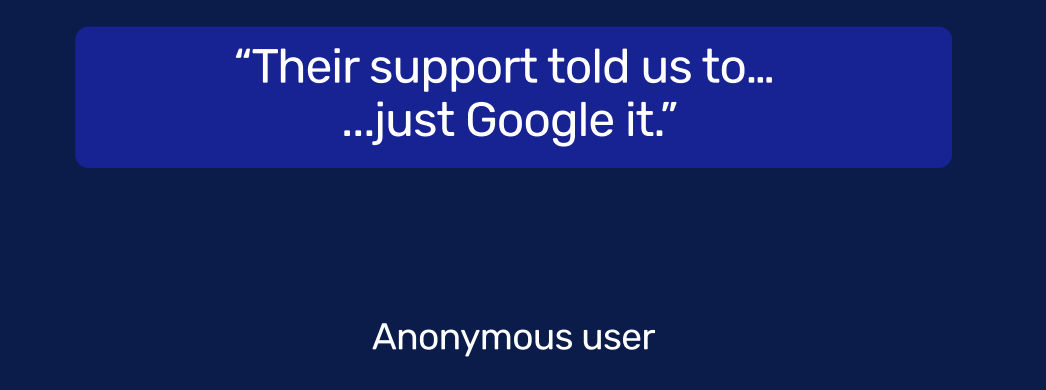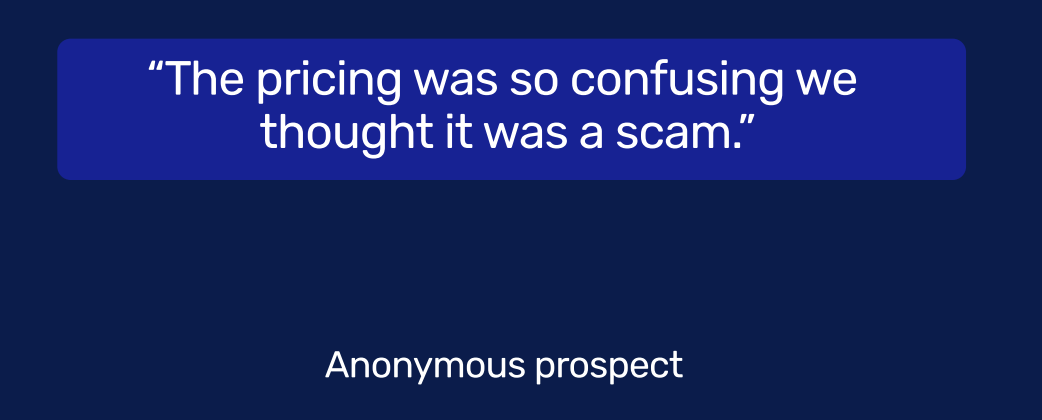According to Forrester, 70% of B2B companies do not properly measure the results of their Win-Loss programs due to a lack of appropriate KPIs.Yet, without relevant indicators, it’s impossible to identify real improvement levers, track trends, or anticipate flaws before they become costly.
Win-Loss analysis involves systematically analyzing why a company wins or loses business opportunities, based on qualitative and quantitative data collected from customers and internal teams.
But Win-Loss isn’t just about knowing whether you win or lose a deal. It’s about understanding why, and, most importantly, acting intelligently on that data.
In this article, we’ll dive into 3 often neglected KPIs that, once integrated into your management approach, will transform how you capitalize on feedback, optimize your sales strategies, and sustainably boost your closing rate.
We’ll cover :
- Why the qualitative feedback collection rate is as crucial as the closing rate,
- How the rate of analysis and action on insights is a true performance lever,
- And finally, how tracking the retention and re-engagement rate post-loss can turn a “no” into an opportunity.
If you think your Win-Loss KPIs are limited to “number of interviews” or “success rate,” this article is for you.
1. The qualitative feedback collection rate : the foundation of everything
In a Win-Loss program, collecting feedback is good. Collecting enough is better. But above all, this feedback must be rich and qualitative.
Yet, many teams only measure the sheer volume of interviews conducted, without considering whether these responses are truly actionable.
Why is this KPI essential ?Imagine you only collect 10% of qualitative customer feedback on lost deals. This small sample will never reflect the full reality or the true reasons behind commercial failures. You risk focusing on biases, isolated cases, or worse, missing weak signals.
This is easily explained : the more representative data you have, the more you can identify solid trends, and the less likely you are to make mistakes in your strategic adjustments.
The benefits of structured feedback collectionOptimizing feedback collection transforms scattered data into concrete action levers. By outsourcing interviews to a neutral third party and automating post-decision follow-ups, companies gain efficiency : less time wasted on unsuccessful solicitations, higher-quality responses, and a significantly improved collection rate.
The result ? A detailed analysis of obstacles and motivations, leading to targeted adjustments (offer, pitch, process) and, ultimately, a measurable increase in conversions. A methodical approach also reduces the mental load on sales and marketing teams while enhancing the credibility of the insights gathered. This creates a virtuous cycle that increases conversion rates and agility. The goal is to embed this process within a structured organization that encompasses the entire sales cycle.
How to improve this rate ?
- Focus on speed : reach out to your prospects quickly after the decision, or even before it, by planning feedback regardless of the outcome.
- Use a neutral third party to conduct interviews, ensuring honesty and openness.
- Automate reminders and simplify the feedback process.
At Diffly, we often receive feedback from our clients that they never expected. Here are two brief examples :


2. The rate of analysis and action on insights : the real performance lever
Collecting data is one thing. But knowing how to analyze this feedback and, above all, turn it into concrete levers is where the true value of a Win-Loss program lies.
An often overlooked KPI is the rate of analysis of collected feedback and the tracking of corrective actions that follow.
Why is this crucial ?According to a recent Gartner study, only 35% of companies fully leverage their Win-Loss data to refine their strategy. The rest merely accumulate reports that, due to lack of follow-up, end up buried in unopened folders. Yet, this data contains critical lessons : reasons for lost contracts, competitive strengths, or misunderstood expectations.
Without a structured methodology to turn them into concrete levers, you sacrifice not only your agility but also your ability to innovate. Worse, you risk repeating the same mistakes while your competitors gain decisive advantages. The challenge is not just to collect data but to create a virtuous cycle : prioritization and rapid adaptation. A missed opportunity today can become a handicap tomorrow.
The benefits of strategic exploitation of Win-Loss feedbackCollecting feedback is not enough : transforming it into concrete actions makes all the difference. By structuring analysis through shared dashboards and systematizing the tracking of recommendations (e.g., adjusting key messages, pricing), companies move from a passive process to a lever for continuous improvement.
The result ? A tangible reduction in deal losses, better team alignment around priorities, and data-driven decisions that boost competitiveness. The challenge is to make Win-Loss insights a living tool, integrated into operational routines to maximize their impact.
How to improve this KPI ?
- Create a cross-team committee (sales, marketing, product) to regularly analyze insights.
- Implement a tool to track corrective measures and hold stakeholders accountable.
- Integrate feedback into continuous improvement routines (sales reviews, training, etc.).
3. The post-loss retention and re-engagement rate: turning a “No” into an opportunity
One KPI that many managers overlook is tracking lost prospects or customers. Yet, in SaaS, buying cycles are often long, needs evolve, and a “no” today can become a “yes” tomorrow.
Why is this KPI strategic and key to performance?According to Bain & Company, increasing customer retention by 5% can boost profits by 25% to 95%. Even if your Win-Loss program doesn’t directly target existing customers, staying in touch with those who no longer use your services allows you to better understand their needs, correct your mistakes, and sometimes regain their trust.
A high re-engagement rate means your team knows how to maintain open dialogue even after an unfavorable decision.
The benefits of proactive follow-up with lost prospectsA Win-Loss process isn’t just about analyzing failures : it also allows you to cultivate future opportunities. By establishing regular follow-ups (e.g., targeted outreach, content tailored to initial objections), companies turn “no’s” into renewed conversations.
The impact ? A significant reactivation of prospects (up to 30% in some cases), shorter sales cycles due to a better understanding of obstacles, and a commercial pipeline energized by additional revenue. The key advantage : converting failure into a lasting relationship while sharpening your value proposition for future interactions.
How to track and improve this KPI?
- Clearly identify prospects to follow in a CRM or dedicated tool.
- Define a schedule for follow-ups and tailored content.
- Regularly analyze reactivation rates to adjust your actions.
- Integrate prospect feedback to improve your offer and messaging next time.
How to integrate these KPIs into your Win-Loss dashboard ?
A good Win-Loss dashboard should not only display closing rates. It should provide a 360° view of customer signals, both qualitative and quantitative, for a comprehensive analysis of their use in strategy.
Here’s a simple proposal to get started :
Bonus : The “average time before follow-up” KPI
An often underestimated but crucial indicator for customer satisfaction : the delay between a demo (or key meeting) and the first follow-up.
Data from InsideSales confirms : waiting more than 5 minutes after a request divides conversion chances by 10. Integrating this criterion into your Win-Loss analysis and reducing it can immediately boost your closing rate and, therefore, the customer experience.
Conclusion : Don’t overlook these key KPIs to maximize the impact of your Win-Loss program
Managing an effective Win-Loss program isn’t just about measuring conversion rates or traditional customer satisfaction. By integrating often overlooked KPIs such as :
- The average time to incorporate customer feedback into your sales and product actions,
- The post-loss retention and re-engagement rate, which allows you to turn “no’s” into future opportunities,
You give your sales and product teams a decisive advantage.
These metrics provide deeper insight into market reality and allow for continuous strategy adaptation.
Finally, to succeed, remember that these KPIs are not abstract numbers. They must be integrated into your routines, shared with all relevant teams, and, above all, used to act quickly.
You now have the keys to managing a robust Win-Loss program, which will not only help you understand why you lose or win but, most importantly, turn these insights into powerful growth levers.
Next step ? Try Diffly to improve your Win-Loss program by booking a demo !

.jpg)
